Danged winky little deck plates.
 P1160413
P1160413 by
Mike McCrea, on Flickr
There is just not enough room there for what I want to accomplish in the way of bungee painter keepers, and I do not like the coil of rope standing tall and proud above the sheerline and deck plates. Thinner painter line would lessen that, but I like that 5 16 th BlueWater Rescue Rope, for strength, knot and hitch holding, and hand kindliness.
The Kevlar Malecite does not have float tanks, so no Bungee Dealee Bob and end tank D ring anchor. There is only a 6 inch gap between the end of the winky deck cap and the carry handles. The RX Wilderness likewise has no end tank, but is more spacious, with a 9 inch gap.
For an initial quick and dirty trial I cut some quarter inch thick hardwood to size and shape, as a deck cap extension.
 P1170415
P1170415 by
Mike McCrea, on Flickr
 P1170417
P1170417 by
Mike McCrea, on Flickr
I like that the deck plate augmentation is recessed below the sheerline and deck plates, the painter line coil will rest lower when bungee secured.
Holes drilled and chamfered for bungee cord.
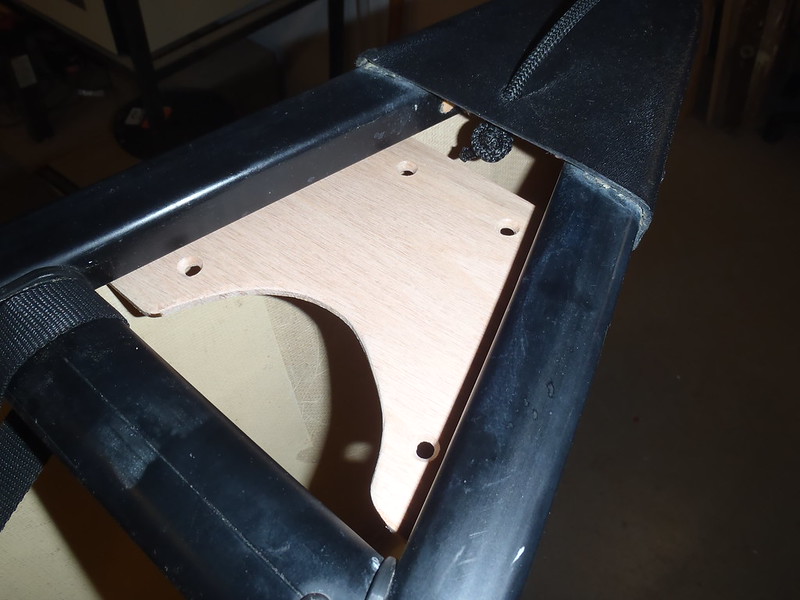 P1170419
P1170419 by
Mike McCrea, on Flickr
 P1170420
P1170420 by
Mike McCrea, on Flickr
Coat of epoxy, including inside the holes. What the hell, a dab of black pigment in the epoxy. Epoxy cured, sanded and cleaned, and a coat of black paint to make them match the deck plates and gunwales
The deck plate extension on the Wilderness was a piece of cake. Two machine screw holes centered on the inwale and done. I was out of small flange washers and had to use SS cup washers, easily replaced.
 P1200428
P1200428 by
Mike McCrea, on Flickr
The Malecite was more of a challenge. That canoe has IQ1 aluminum gunwales. The inwale is very narrow, and oddly shaped on the bottom. Try as I might the screw holes in the wood deck plate extension were too close to the edge.
Nix the machine screws and on to a more time consuming solution. I cut and stapled a length of Dynel cord to the top side of the wood, and saturated it with Gflex. Clamped tight to the underside of the inwale and walk away Renee. I hope I like it, cause it is a permanent fixture now.
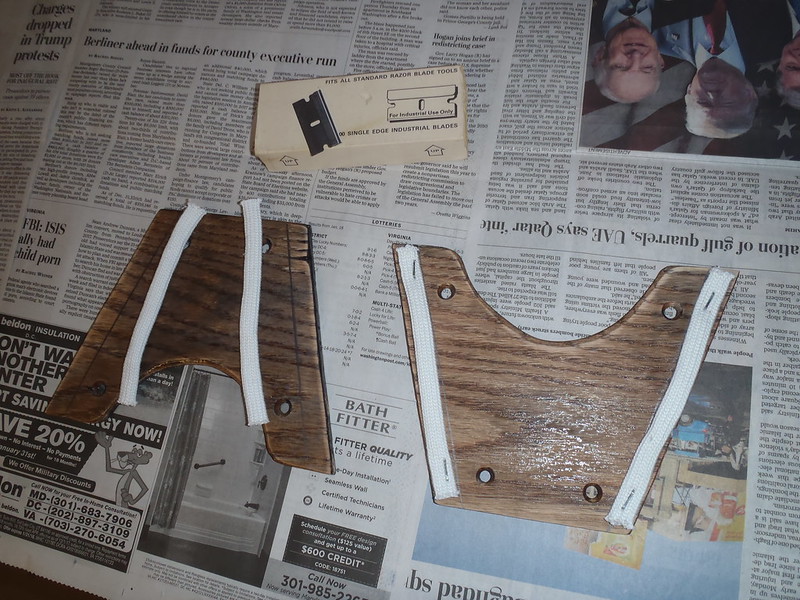 P1200425
P1200425 by
Mike McCrea, on Flickr
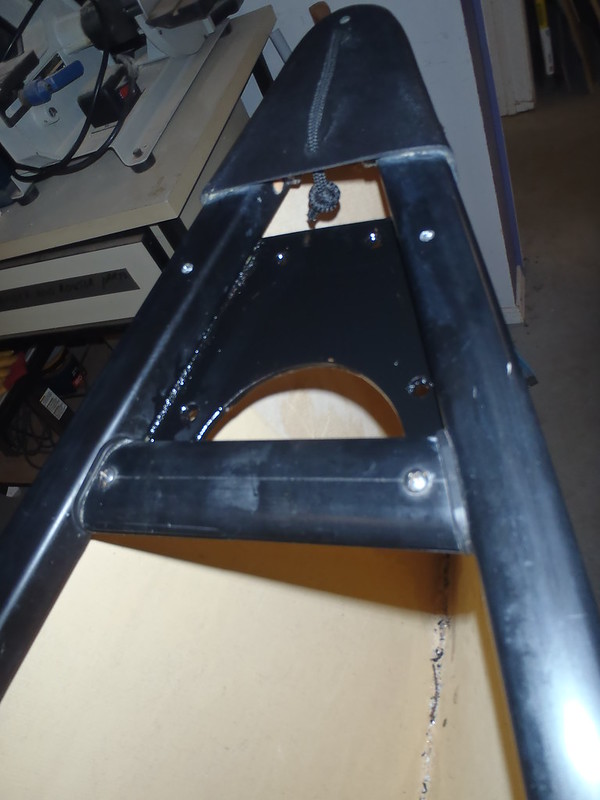 P1200429
P1200429 by
Mike McCrea, on Flickr
Before I installed them I weighed them, epoxy coated quarter inch hardwood with Z bungee and stainless hardware, 4 oz plus/minus on the small weight scale. A flat piece of carbon fiber as a recessed deck plate extension, screwed or pop riveted in from underneath, would weigh next to nothing.
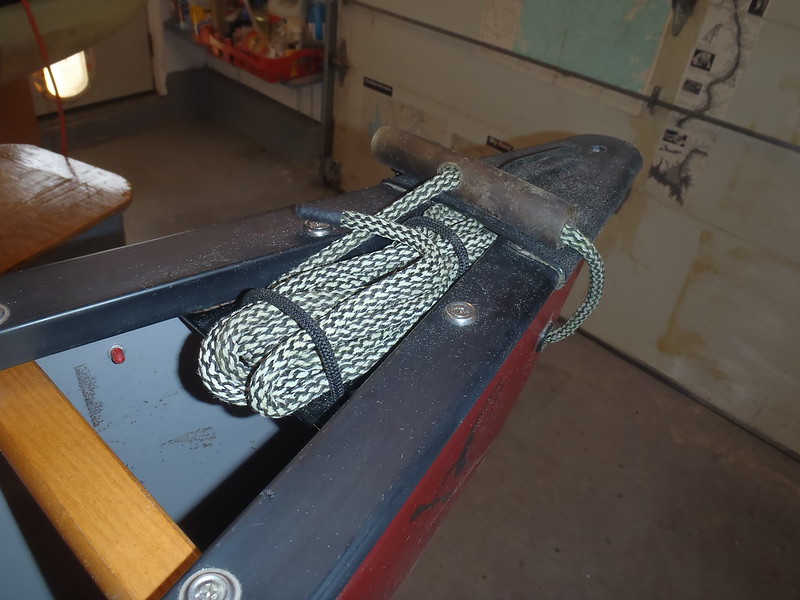 P1220442
P1220442 by
Mike McCrea, on Flickr
 P1220452
P1220452 by
Mike McCrea, on Flickr
I like it. The painter line is securely held and recessed below the sheerline, aligned fore and aft. I still have the Z pattern, with a diagonal length of bungee under the deck plate extension.
 P1220449
P1220449 by
Mike McCrea, on Flickr
Mark 1 of course. I can see room for improvement beyond nil weight carbon fiber plates screwed or pop riveted under the inwales and existing deck cap. As Glenn would say,
This requires more thought.
 P1160413 by Mike McCrea, on Flickr
P1160413 by Mike McCrea, on Flickr P1170415 by Mike McCrea, on Flickr
P1170415 by Mike McCrea, on Flickr P1170417 by Mike McCrea, on Flickr
P1170417 by Mike McCrea, on Flickr P1170419 by Mike McCrea, on Flickr
P1170419 by Mike McCrea, on Flickr P1170420 by Mike McCrea, on Flickr
P1170420 by Mike McCrea, on Flickr P1200428 by Mike McCrea, on Flickr
P1200428 by Mike McCrea, on Flickr P1200425 by Mike McCrea, on Flickr
P1200425 by Mike McCrea, on Flickr P1200429 by Mike McCrea, on Flickr
P1200429 by Mike McCrea, on Flickr P1220442 by Mike McCrea, on Flickr
P1220442 by Mike McCrea, on Flickr P1220452 by Mike McCrea, on Flickr
P1220452 by Mike McCrea, on Flickr P1220449 by Mike McCrea, on Flickr
P1220449 by Mike McCrea, on Flickr P1220456 by Mike McCrea, on Flickr
P1220456 by Mike McCrea, on Flickr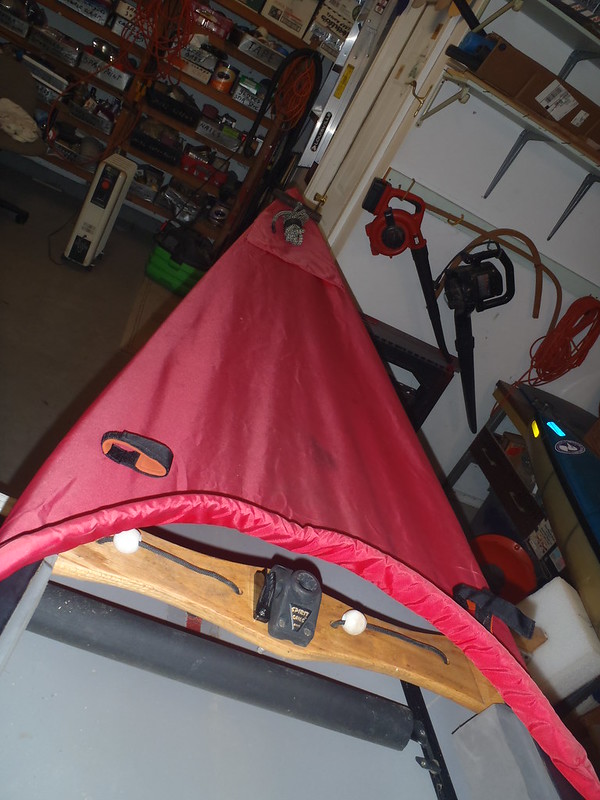 P1220457 by Mike McCrea, on Flickr
P1220457 by Mike McCrea, on Flickr P1220461 by Mike McCrea, on Flickr
P1220461 by Mike McCrea, on Flickr P1220464 by Mike McCrea, on Flickr
P1220464 by Mike McCrea, on Flickr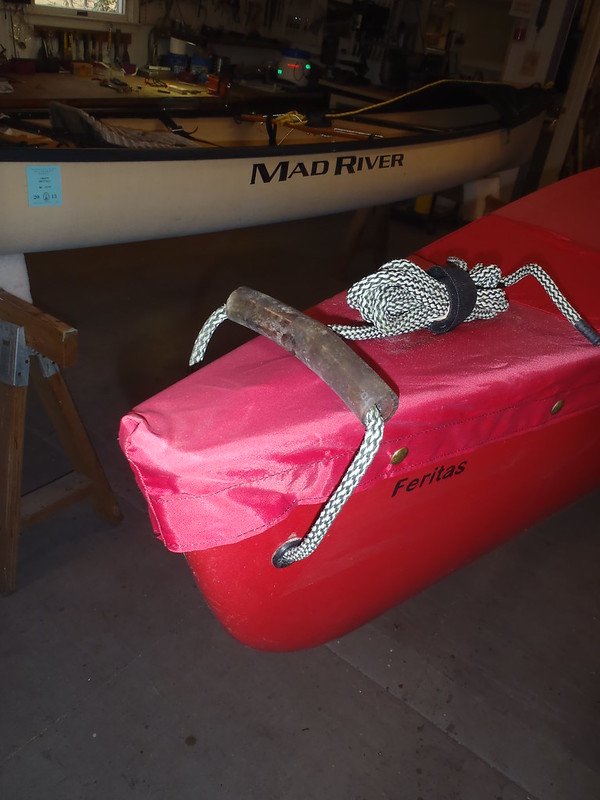 P1220468 by Mike McCrea, on Flickr
P1220468 by Mike McCrea, on Flickr